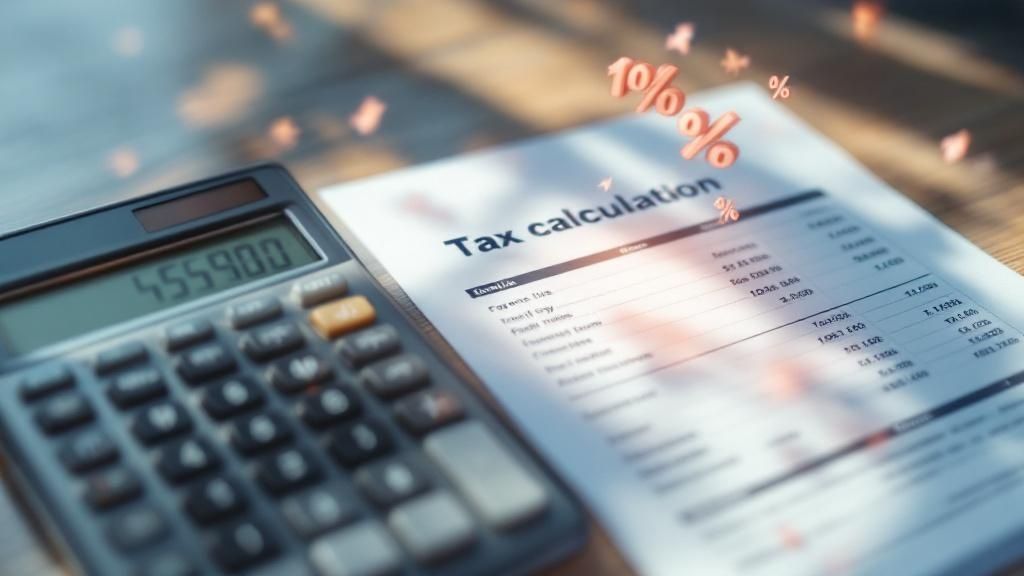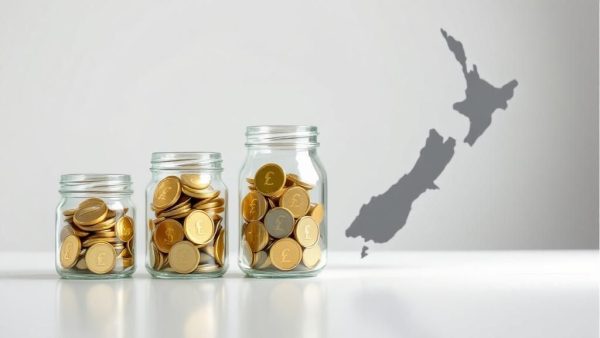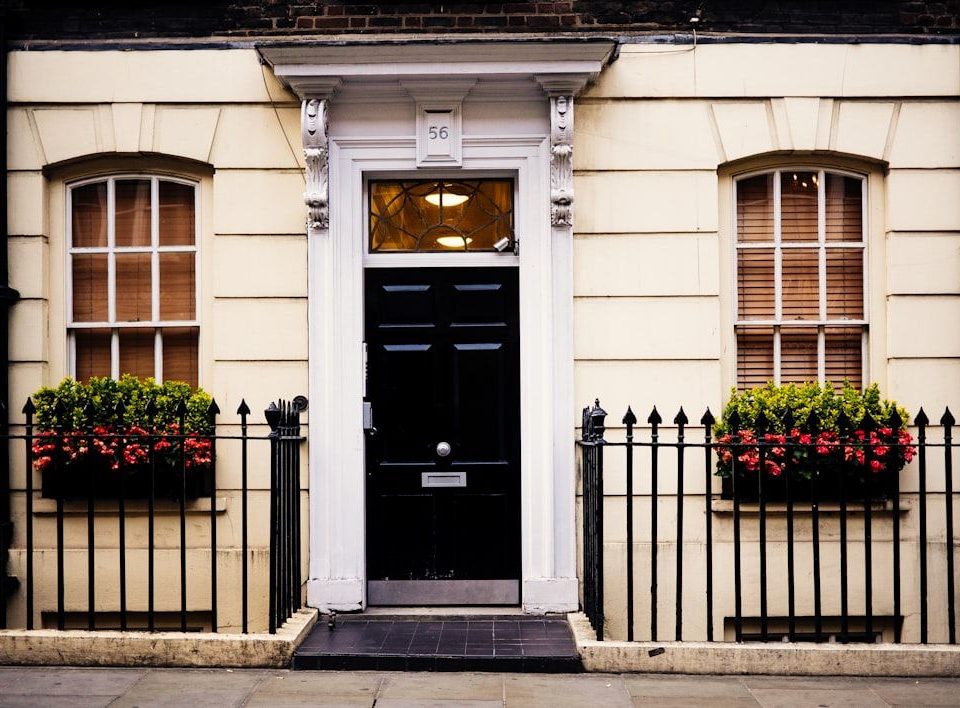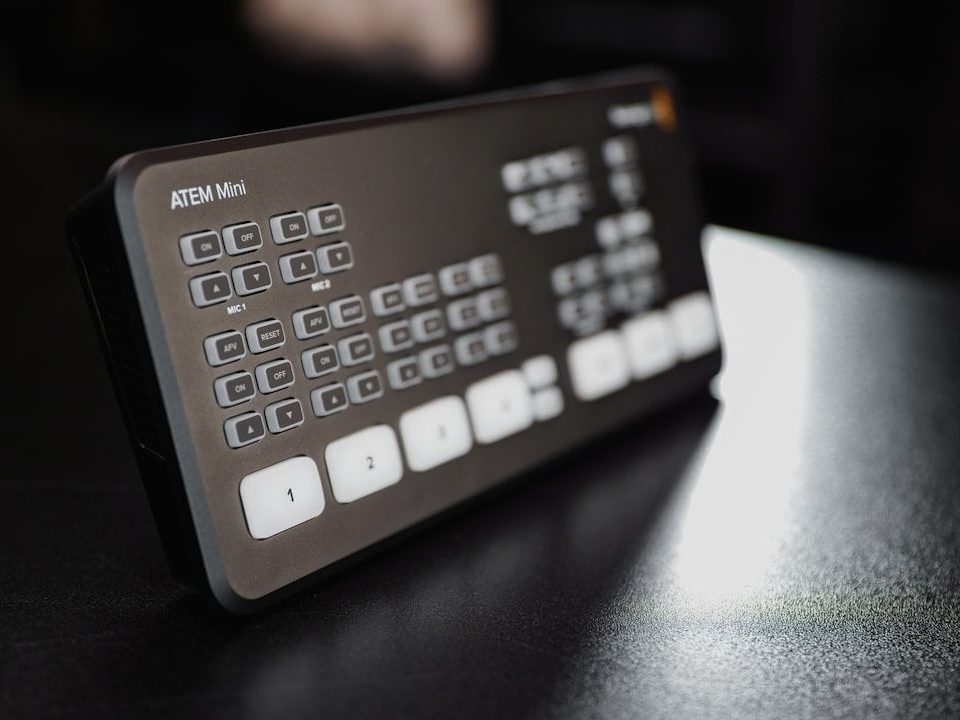
Is Your Ute Really Exempt from FBT? What Business Owners Need to Know
April 25, 2025
Business Continuity Plan Template: Complete Guide
April 30, 2025Decoding the Tax Percentage in NZ
Trying to get your head around the tax percentage in NZ can feel like learning a new language. But don’t worry, it’s actually much simpler than it looks. It really just comes down to three main players: tax on what you earn, tax on what companies earn, and tax on what you buy.
Your Guide to NZ Tax Percentages
Let’s cut through the jargon. Think of the New Zealand tax system as having three core parts: what you earn personally (income tax), what a registered company earns (corporate tax), and the tax on stuff you buy (GST). Each has its own rate, but once you know them, you’re halfway there.
For most of us, personal income tax is the big one. New Zealand has what’s called a progressive system, which is a fancy way of saying not all your income gets taxed at the same rate.
Imagine you have a few buckets lined up. Your first chunk of earnings goes into the first bucket, and it gets taxed at the lowest rate. Once that bucket’s full, the money starts spilling into the next one, which gets taxed at a slightly higher rate, and so on. The key thing to remember is that your entire income is never taxed at your highest rate—only the portion that falls into that top bracket.
The Main Taxes at a Glance
So, what are the actual numbers we’re talking about? Let’s break it down into the core percentages you’ll see most often as an individual or small business owner.
- Personal Income Tax: This is the tiered or “bucket” system we just talked about, with rates that climb from 10.5% up to 39%. We’ll dig into the specific brackets next.
- Goods and Services Tax (GST): This one’s simple. It’s a flat 15% that gets added to the price of most things you buy and sell.
- Corporate Tax: If you’re running a registered company, the tax on your profits is a clean 28%.
These are the foundational numbers for anyone earning or spending money in New Zealand. While things can change, our tax rates have been pretty steady over the years. For instance, the top personal rate has hovered around an average of 36% between 2004 and 2025. You can even check out historical data on New Zealand’s tax rates to see how things have shifted over time.
NZ Main Tax Percentages at a Glance
Here’s a quick-reference table to keep these key rates top of mind. This covers the main taxes you’ll encounter in New Zealand.
| Tax Type | Current Rate |
|---|---|
| Personal Income Tax | 10.5% – 39% (Progressive) |
| Corporate Tax | 28% (Flat Rate) |
| Goods and Services Tax (GST) | 15% (Standard Rate) |
This table gives you a snapshot, but remember the devil is in the details, especially with the personal income brackets.
Getting a handle on these three core taxes gives you a massive advantage in managing your money. Whether you’re on a salary, freelancing on the side, or running your own business, knowing these percentages is the first real step to getting things under control. For a deeper dive, check out our complete guide to understanding taxation rates in NZ.
How Your Personal Income Tax Is Calculated
When Kiwis talk about the “tax percentage NZ,” they’re usually talking about the tax that comes out of their paycheque. This is your personal income tax, and it’s calculated using what’s called a progressive tax system. It sounds a bit complicated, but the idea behind it is actually pretty simple and fair.
Think of it like filling a set of buckets, each one a different size. You fill the smallest bucket first, then the next, and so on. Each bucket has a different tax rate, so you only pay the higher rates on the money that spills into the bigger buckets. You’re never penalised for earning more.
This method ensures that the tax you pay is directly related to what you earn. People on lower incomes pay a smaller percentage overall, while those on higher incomes contribute a bit more.
The Income Tax Brackets
The Inland Revenue Department (IRD) is the one that sets the “buckets,” or as they’re officially known, the income tax brackets. Let’s take a look at the current rates.
NZ Personal Income Tax Brackets
Here’s a simple table that shows exactly how your income is taxed piece by piece. Remember, the higher rates only apply to the slice of your income that falls into that particular bracket.
| Income Range (NZD) | Tax Rate on This Portion |
|---|---|
| $0 – $15,600 | 10.5% |
| $15,601 – $53,500 | 17.5% |
| $53,501 – $78,100 | 30% |
| $78,101 – $180,000 | 33% |
| Over $180,000 | 39% |
So, no matter how much you earn, that first $15,600 is always taxed at just 10.5%. It’s a foundational part of the calculation for everyone.
Putting It All Together: A Practical Example
Let’s make this real. Imagine someone earns $60,000 a year. Instead of being taxed a flat 30% on the whole amount, their income is taxed in layers.
Here’s how it breaks down:
- The first $15,600 is taxed at 10.5% = $1,638
- The next chunk of income (from $15,601 up to $53,500, which is $37,900) is taxed at 17.5% = $6,632.50
- The final portion (from $53,501 up to their $60,000 salary, which is $6,500) is taxed at 30% = $1,950
Add it all up, and their total tax for the year comes to $10,220.50
This is all managed through the Pay As You Earn (PAYE) system, which is why your employer handles these deductions for you with every payslip. They follow this exact formula.
Once you get your head around this layered approach, a lot of the fear around tax disappears. It shows why getting a pay rise is always a good thing—you’ll never take home less money because you moved into a new bracket. You just pay the higher rate on the extra cash you earned.
Getting a Grip on GST

You’ve seen it a million times on your receipts: that little line item for “GST”. It’s the Goods and Services Tax, a flat 15% tax added to pretty much everything bought and sold in New Zealand.
Think of it as a consumption tax. It’s the government’s way of taxing what people spend, not just what they earn. For most of us as shoppers, we don’t even notice it—it’s just baked into the final price on the shelf.
But for a small business owner? It’s a whole different ball game. GST isn’t just a cost; it’s a tax you collect for the government. You’re essentially the middleman.
When Does GST Become Your Problem?
Good news—you don’t have to start dealing with GST from the moment you open your doors. It all comes down to your annual turnover (your total income before taking out any expenses).
The magic number is $60,000. If your business makes more than this in any 12-month period, you are legally required to register for GST. Below that, it’s optional.
So, why would anyone register if they don’t have to? Simple: cash flow. Registering voluntarily means you can claim back the GST you pay on all your business expenses. For some businesses, this can be a huge help, putting money back into your pocket sooner.
GST in Action: A Coffee Shop Breakdown
Let’s get practical and walk through an example. Say you run a local coffee shop. Here’s what the GST cycle looks like for a single flat white.
- You collect GST from your customers. You sell a flat white for $5.50. That price already includes the GST. Broken down, the coffee itself is $4.78, and the GST you’ve collected on behalf of the IRD is $0.72.
- You pay GST on your supplies. To make that delicious coffee, you bought beans, milk, and cups. Let’s say those supplies cost you $2.30, and $0.30 of that was GST you paid to your supplier.
- You file your GST return. When it’s time to file, you do some simple maths. You take the total GST you collected ($0.72) and subtract the GST you paid on your expenses ($0.30). The difference—$0.42—is what you send to the IRD.
This system is designed to tax only the “value” your business adds. By claiming back the GST on your costs, you’re not getting taxed on tax, which keeps things fair. Getting this cycle down is key for any GST-registered business trying to stay on top of its finances and understand the true tax percentage NZ businesses deal with.
Learn more: Mastering Claiming GST: A Complete Guide
Understanding Business Tax Rates in New Zealand
Running a business in New Zealand means stepping into a different tax world. You’re not just dealing with your personal income tax anymore; your business has its own set of rules and obligations, and they all hinge on how you’ve set up your company. Getting this right from the start is a game-changer for your cash flow and keeping things above board with the IRD.
The most common setup for a growing business is a registered company. It’s pretty straightforward: any profit your company makes is taxed at a flat rate of 28%. This is the standard corporate tax rate in NZ, and it’s a key number you’ll need to factor into all your financial planning. It’s a clean, fixed percentage applied to your net profit after you’ve paid all your business expenses.
But what if you’re not a company? Plenty of Kiwis kick off their ventures as sole traders or in partnerships, and the tax rules for them work a bit differently.
How Your Business Structure Shapes Your Tax Bill
The legal structure you choose for your business has a massive impact on how you handle your taxes. There’s no single “best” way—it all depends on your situation.
- Companies: As we mentioned, companies pay a flat 28% tax on profits. This is a separate tax paid by the company itself, before you, the owner, take any money out.
- Sole Traders: If you’re freelancing, contracting, or just running the show yourself, you’re a sole trader. Your business profit isn’t taxed separately; it’s simply treated as your personal income. That means you’ll pay tax on it at your own marginal rates, which range from 10.5% up to 39%.
- Partnerships: A partnership is a bit of a hybrid. The business itself doesn’t pay any income tax. Instead, all the profits are split between the partners, and each person pays tax on their share at their individual income tax rate.
Getting your head around these tax percentages from day one is so important for any business owner.
Taking the Sting Out of Year-End Tax with Provisional Tax
One of the biggest shocks for new business owners is getting slapped with a huge tax bill at the end of their first year. That’s where provisional tax comes in to save the day. Think of it like PAYE, but for your business. Instead of one massive, painful lump sum, you pay your tax in manageable installments throughout the year.
Provisional tax isn’t an extra tax. It’s just a system for paying your expected income tax as you earn it. This makes budgeting a whole lot easier and helps you avoid that dreaded end-of-year surprise.
You’ll generally have to start paying provisional tax if your tax bill in the previous year was more than $5,000. Don’t worry, the Inland Revenue Department (IRD) will give you a heads-up when it’s time.
Let’s make it real. Imagine a freelance consultant who expects to make a profit of $90,000 this year. Instead of waiting for a big bill, they’ll make three provisional tax payments based on that forecast. This way, their tax is covered as they go, and they can pour their energy into growing the business, not stressing about a massive debt to the taxman.
Learn more: Your Guide to Understanding What is Provisional Tax in NZ
A Quick Look Back: How New Zealand’s Tax System Came to Be

The tax rates we deal with today didn’t just appear out of thin air. They’ve been shaped over more than a century by huge economic shifts, social changes, and government policies. A little bit of history goes a long way in explaining why the tax percentage NZ looks the way it does now.
New Zealand’s dance with income tax kicked off way back in 1892. Back then, it was a pretty simple affair with just a few tiers. The whole idea was to tax the higher earners a bit more, which laid the groundwork for the progressive system we still use today—the more you earn, the higher your tax rate.
It started off incredibly basic: 0% for anyone earning under £300, 2.5% for those between £300 and £1,000, and a top rate of 5%. But things didn’t stay that simple for long. By 1910, the system had already ballooned to 10 different marginal rates. It’s a fascinating story of gradual change, and if you’re a history buff, you can see how early tax rates were structured in detail.
Major Shifts That Shaped Our Taxes
While the early days saw slow, steady tweaks, big world events like World War II threw a wrench in the works. The country needed money for the war effort, and tax rates shot up accordingly.
But the biggest shake-up in modern NZ tax history? That would have to be the introduction of the Goods and Services Tax (GST) in 1986. This wasn’t just a minor adjustment; it was a game-changer that completely rebalanced the entire system.
Before GST, the government leaned heavily on income tax. Bringing in a 10% consumption tax (which is now 15%) spread the load, shifting some of the tax burden from what people earn to what they spend.
This massive reform was all about creating a more stable and efficient way to collect revenue, and it fundamentally changed how the government’s books are balanced.
Why This History Matters Today
So, why the history lesson? Because it shows that our tax system is a living thing, constantly adapting to the country’s needs. From its humble beginnings to the massive GST overhaul, it has always been evolving to fund public services and support the economy.
Knowing this backstory helps make sense of the debates we hear today about tax and what might change in the future. For modern businesses, it’s all about navigating the system we have now. This means streamlining tax documentation processes and making sure you’re playing by today’s rules, which were all born from this long, winding history.
How Tax Policies Actually Shape Our Lives
It’s easy to think of taxes as just the money that disappears from your payslip to fund roads and hospitals. But the truth is, tax rates are one of the most powerful tools the government has to shape the entire economy and even society itself.
How much the highest earners are taxed, for example, has a direct knock-on effect on how wealth is spread around the country. This isn’t about politics; it’s about seeing the cause and effect that tax policies have always had on the financial playing field.
If you look back through New Zealand’s history, you can spot a clear pattern. When top tax rates were higher, the wealthiest Kiwis tended to hold a smaller share of the nation’s total income. When those top rates dropped, their slice of the pie got bigger. It shows that tax policy is a major lever for influencing economic equality.
The Link Between Taxes and Income
Digging into the numbers paints a pretty interesting picture of New Zealand’s economy over the last century. Between 1921 and 2005, tax policy was a massive factor in shifting who earned what.
In the early days of that period, the top 10% of earners took home between 30-45% of the country’s total income. But as tax rates changed over the years, so did the share of income heading to the top. It’s a clear demonstration of how tax settings and wealth concentration are connected. If you’re a numbers person, you can dive into the detailed research on how tax rates have historically affected top incomes in New Zealand.
Thinking about these long-term trends gives you a much better perspective on the tax debates we have today. When you hear people arguing about changing the tax brackets, remember it’s not just about abstract numbers—it’s about making decisions that have real, tangible effects on people and communities.
At the end of the day, understanding these historical patterns helps make sense of the modern-day conversations we have about tax fairness and New Zealand’s economic future.
Still Got Questions About the NZ Tax Percentage?
Got a few more questions rattling around? Don’t worry, that’s completely normal. Tax can feel like a maze, but a few straight answers can make a world of difference. Let’s clear up some of the most common things people ask.
Getting a handle on these details is the first step to feeling confident about your money, whether you’re on a salary, freelancing, or running the show at your own business.
How Do I Find My Tax Code?
This is a big one: “What’s my tax code, and how do I know it’s the right one?” Think of your tax code as a short instruction you give your employer. It tells them how much tax to deduct from your pay, and it’s based entirely on your situation.
So, what goes into it?
- Do you have more than one job?
- Are you paying off a student loan?
- What’s your residency status?
Using the wrong code can mean you end up paying too much tax (or worse, not enough). The easiest way to get it right is to use the simple questionnaire on the IRD’s website. It only takes a couple of minutes and sorts it all out for you.
What if I’ve Paid Too Much Tax?
Finding out you’ve overpaid tax is a pretty good feeling, right? If that happens, the IRD automatically works it out after the financial year wraps up on March 31st. You’ll then get a tax refund.
You usually don’t have to lift a finger to get it back. The best way to track this is to log into your MyIR account and keep an eye out for any notifications.
It’s a common misconception, but New Zealand doesn’t have a tax-free threshold. Unlike in some other countries, you’re taxed on every single dollar you earn, starting right away at that lowest 10.5% rate.
This approach is central to how our progressive tax system is designed—everyone contributes from the very first dollar they make.
Trying to manage your taxes can feel like a full-time job in itself, but you don’t have to go it alone. The team at Business Like NZ Ltd are specialists in helping Auckland’s small and medium businesses nail their tax and get smart business advice. We’re here to help you build financial freedom. Find out how we can support your business today.




